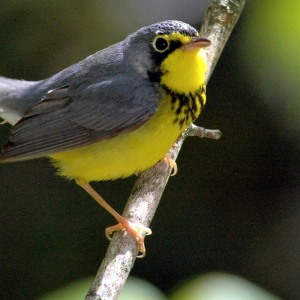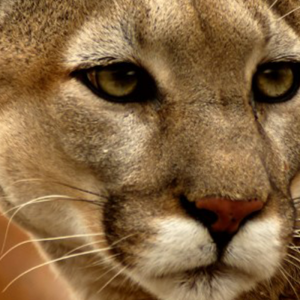Blaireau d’Amérique
Vital Signs
Common name: American Badger
Latin name: Taxidea taxus
Status under SARA: As of the COSEWIC November 2012 assessment, 4 subspecies of the American Badger were officially recognized – 3 of which are present in Canada:
- Taxidea taxus jacksoni: Endangered
- Taxidea taxus jeffersonii (East pop.): Endangered
- Taxidea taxus jeffersonii (West pop.): Endangered
- Taxidea taxus taxus: Special Concern
Range: Global range; American Badgers occur over west to central North America. Their range stretches from the mid-Prairies down to the tip of Texas, and in Canada, they can be found across the provinces from southern BC to southern Ontario.
Life span: An average of 6 years in the wild for both sexes; longest recorded lifespan was 14 years in the wild.
Size: Badgers are short but wide, measuring anywhere from 76 to 89 cm head-to-tail. Their weight ranges from 5.4 kg to 7.3 kg post-hibernation, with a gradual increase to 9.1 kg in preparation for overwintering. Males are larger in length and weight than females.
Population estimate:
- Taxidea taxus jacksoni: < 200 mature individuals
- Taxidea taxus jeffersonii (East pop.): 100-160 mature individuals
- Taxidea taxus jeffersonii (West pop.): 100-245 mature individuals
- Taxidea taxus taxus: >1000 mature individuals
The Facts
The American Badger is part of the Weasel Family, Mustelidae, which features a group of carnivorous, small-to-medium-sized mammals. Their bodies are ideally shaped to adapt to a digging lifestyle: they are short and sturdy, but long in length. Their heads are wide and streamlined, and their short fore-limbs are equipped with strong claws. Each subspecies has relatively the same fur colouration: they can be anywhere from gray to tawny brownish, and possess distinctive white stripes from their face down to their mid-back. They also have fluffy ears, which gives them the appearance of wearing ear muffs!
Each of the four populations of American Badger subspecies, T.t. jacksoni, T.t. jeffersonii and T.t. taxus, occurs in a distinct region of Canada. For this reason their habitat requirements vary to a degree by region, encompassing grasslands, agricultural areas, steppe, open forests and even forested areas fragmented by roads. Because they are a tunneling species, soil type and structure is key wherever this species is found. . They live in dens with elaborate underground tunnel networks and chambers for sleeping – these dens can be up to 10 metres deep! Jacksoni individuals are found in parts of the Great Lakes region; jeffersonii individuals – both eastern and western populations – range from the mid-west US to just north of the border into parts of southern BC; and taxus individuals are found from mid-east US to the Prairie provinces.
The American Badger feeds on rodents – especially ground squirrels, marmot species, pocket gophers, voles and mice. Due to habitat differences between the subspecies, there is some regional specialization of American Badger diets determined by prey availability. Badgers are quite opportunistic, and will complement their diet with small birds, eggs, reptiles, amphibians and large invertebrates.
The American Badger is a solitary animal, mainly active at dusk, at night and at dawn. Although they are not true hibernators, they undergo periods of torpor, in which they decrease their metabolism and physiological activity to conserve energy during the coldest months.
Breeding takes place during July and August; however, females have delayed implantation of the fetus until February. They will continue to gain weight during the summer so that they have enough energy to develop the fetus and give birth later in the season when the food sources become more plentiful.
During late-March to early-April, a litter of 1 to 5 babies can be expected. Juveniles will leave their natal den in June or July to find their own territory and begin their own life.
The Story
Considering the American Badger’s large range over North America, it is of great concern that numbers of some subspecies are very low. Habitat fragmentation, due to ongoing agricultural activity and urbanization, threatens each population, particularly by separating the territories for males and females to come together during their breeding season. Prey availability and collisions with automobiles also limit and diminish the American Badger population.
What’s Being Done
Before the COSEWIC assessment in 2000, all subspecies were recognized as one, and thus, Canada’s distinct badger populations were not properly addresses. Once subspecies were recognized and assessed by COSEWIC and distinct statuses were determined in 2012, species recovery teams could be established . After to examine collect data and conduct research on each subspecies to map out the distribution and abundance, as well as understand the threats to, each of Canada’s badger subspecies.
Jacksoni badgers reside in southwestern Ontario and are provincially protected by the Ontario Endangered Species Act 2007. This subspecies is also listed under the federal Species at Risk Act (SARA) as Endangered and is therefore protected on federal lands throughout its range.
The Jeffersonii subspecies is also listed under the federal Species at Risk Act as Endangered, though not yet as eastern and western populations. This subspecies is therefore protected on federal lands throughout its range in BC. BC’s Ministry of Environment lists the American Badger as a “red” species, meaning it is considered provincially threatened or endangered. A provincial Recovery Strategy for the subspecies was published in 2008.
Since habitat loss is a big threat to the badgers, habitat protection programs have been implemented around known den locations, especially maternal dens.
WHAT YOU CAN DO TO HELP
- Report your sightings: The Ontario Ministry of Natural Resources and Forestry provides links on its website to track species at risk.
- Report any illegal activity: If you’re on protected provincial lands such as parks, and you witness badger trapping, hunting or other harassment, you can immediately report to your province’s Ministry of Natural Resources and Forestry number/website.
- Landowners: If you find a badger den on your property, you may be eligible for stewardship protection programs!
- Find out more: Find out more about endangered species by visiting conservation websites like Nature Canada!
RESOURCES


